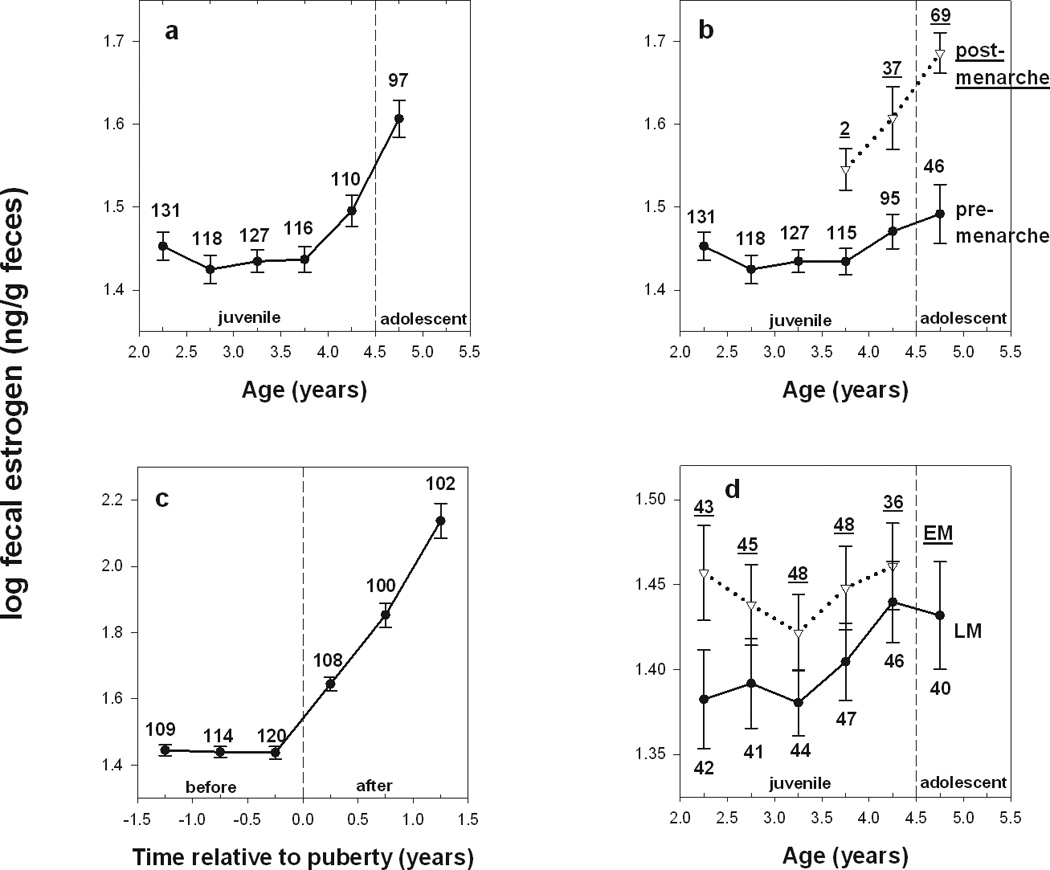Figure 2.

a) Average fE as a function of age in Amboseli females. Each value represents the mean ± SE across females of the log transformed fE concentration (ng/g feces) for a 6-month period. N’s represent the number of females sampled for each age period. The dashed line represents the median age at menarche for the population. b) Average fE as a function of age in female baboons, separating females who did or did not reach menarche in each age period (indicated as separate lines for pre-menarche and post-menarche females). Note that a given female can have 2 values (a pre- and a post- menarche) in the age period in which she reaches menarche. The dashed line represents the median age at menarche for the population. c) Average fE as a function of time before or after menarche; time 0 indicates the attainment of menarche. d) Average fE as a function of age for females that mature early (EM) or late (LM) relative to the population median age at menarche.
